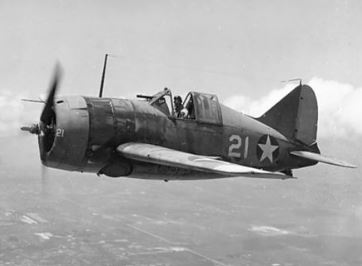Brewster Buffalo
From Our Contribution
Contents
[hide]Remarks
The Buffalo won a competition against the Grumman F4F Wildcat in 1939 to become the U.S. Navy's first monoplane fighter aircraft. Several nations, including Finland, Belgium, Britain and the Netherlands, ordered the Buffalo. In December 1941, Buffalos operated by both British Commonwealth (B-339E) and Dutch (B-339C/D) air forces in South East Asia suffered severe losses in combat against the Japanese Navy's Mitsubishi A6M Zero and the Japanese Army's Nakajima Ki-43 "Oscar".
Meantime, Allied forces were grouping in Australia to halt the Japanese advance, and although fighter aircraft were at a premium, 17 Buffaloes (A51-1/17) were delivered to the RAAF for home defence. These aircraft were taken on strength between June and October 1942, and served with Nos 24, 25, 85, and 87 Squadrons. The RAAF Buffaloes were used for a period of 12 months in photo-reconnaissance and air defence roles. During this time, four aircraft were written off (A51-2, -4, -5 and -6) and the remaining 13 Buffaloes were progressively transferred to the US 5th Air Force.
Buffalo activities in Australia were limited, but in Malaya the Buffalo pilots of No. 21 Squadron RAAF and No. 453 Squadron RAAF left behind a record of heroism and sacrifice rarely surpassed in RAAF history.
General characteristics
- Crew: One
- Length: 8.02m
- Wingspan: 10.67m
- Height: 3.68m
- Empty weight: 2,100 kg
- Max takeoff weight: 3,200 kg
- Powerplant: Pne 1,200 hp Wright Cyclone radial engine
- Maximum speed: 504 Km/h
- Range: 1046 km
- Service ceiling:
- Armament9296m 30,500 ft
- Guns: 2 x 0.50mm in fuselarge, and 2 x 0.50mm in wings
- Bombs:
Squadrons
- No. 21 Squadron RAAF
- No. 24 Squadron RAAF
- No. 25 (City of Perth) Squadron RAAF
- No. 85 Squadron RAAF
- No. 87 Squadron RAAF
Crew members
Ground Crew
No. 25 (City of Perth) Squadron RAAF
- Edward Arthur Ross 24 Jul 1941 - 22 Oct 1941
